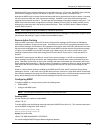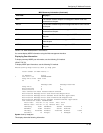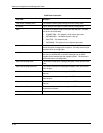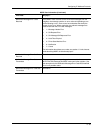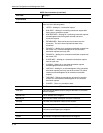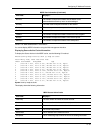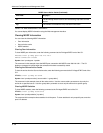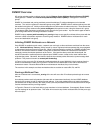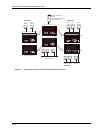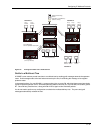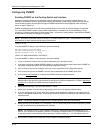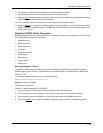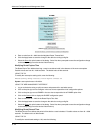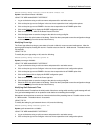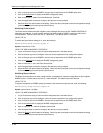
Configuring IP Multicast Protocols
DVMRP Overview
HP routing switches provide multicast routing with the Distance Vector Multicast Routing Protocol (DVMRP)
routing protocol. DVMRP uses Internet Group Membership Protocol (IGMP) to manage the IP multicast
groups.
DVMRP is a broadcast and pruning multicast protocol that delivers IP multicast datagrams to its intended
receivers. The receiver registers the interested groups using IGMP. DVMRP builds a multicast delivery tree with
the sender forming the root. Initially, multicast datagrams are delivered to all nodes on the tree. Those leaves that
do not have any group members send prune messages to the upstream router, noting the absence of a group.
The upstream router maintains a prune state for this group for the given sender. A prune state is aged out after a
given configurable interval, allowing multicasts to resume.
DVMRP employs reverse path forwarding and pruning to keep source specific multicast delivery trees with the
minimum number of branches required to reach all group members. DVMRP builds a multicast tree for each
source and destination host group.
Initiating DVMRP Multicasts on a Network
Once DVMRP is enabled on each router, a network user can begin a video conference multicast from the server
on R1. Multicast Delivery Trees are initially formed by source-originated multicast packets that are propagated
to downstream interfaces as seen in Figure 9.5. When a multicast packet is received on a DVMRP-capable router
interface, the interface checks its DVMRP routing table to determine whether the interface that received the
message provides the shortest path back to the source. If the interface does provide the shortest path, the
interface forwards the multicast packet to adjacent peer DVMRP routers, except for the router interface that
originated the packet. Otherwise, the interface discards the multicast packet and sends a prune message back
upstream. This process is known as reverse path forwarding.
In Figure 9.5, the root node (R1) is forwarding multicast packets for group 229.225.0.2 that it receives from the
server to its downstream nodes, R2, R3, and R4. Router R4 is an intermediate router with R5 and R6 as its
downstream routers. Because R5 and R6 have no downstream interfaces, they are leaf nodes.
The receivers in this example are those workstations that are resident on routers R2, R3, and R6.
Pruning a Multicast Tree
After the multicast tree is constructed, pruning of the tree will occur after IP multicast packets begin to traverse
the tree.
As multicast packets reach leaf networks (sub-nets with no downstream interfaces), the local IGMP database
checks for the recently arrived IP multicast packet address. If the local database does not contain the address
(the address has not been learned), the router prunes (removes) the address from the multicast tree and no longer
receives multicasts until the prune age expires.
In Figure 9.6, Router 5 is a leaf node with no group members in its local database. Consequently, Router 5 sends
a prune message to its upstream router. This router will not receive any further multicast traffic until the prune age
interval expires.
9 - 39



